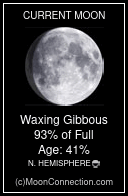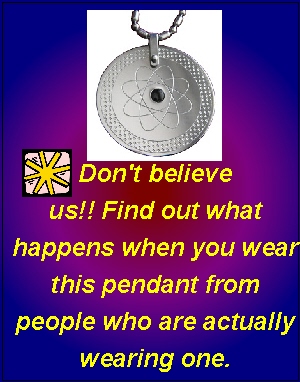The Winnemucca Institute for Advanced Studies presents
What is Time
[ The following is a transcription of the audio portion of an Electric Universe, wwwThunderbolts.info, YouTube video
by Michael Armstrong titled "What Is Time".
I have then moderately edited it for better clarity, and moderately added to it for a fuller understanding of the subject,
for the benefit of the reader. ]
Sorry, no Time Travel ! and no Warp 5 in your spaceship !
Modern Astrophysics and Cosmology have erroneously fused the concepts of Space and Time into a 'thing', a four-dimensional continuum they call the 'SpaceTime Continuum'. Albert Einstein predicted, and recently Mainstream Consensus Scientists have claimed to observe, ripples in the so-called 'fabric' of 'SpaceTime'. But is it valid to define Time in such a way as to reify it ? ( take an abstract concept and make it into a concrete object ) Is there a more valid way to define Time ? Let us now explore one of the most basic questions in all of Cosmology : What is Time ?
First, let us make sure that we understand that there is a difference between the words 'Time' and 'Eternity', because they are NOT the same. The definition of Eternity may be somewhat difficult to talk about, but the definition of Time can be very simple and clear. Since time is included in, and affects not only our everyday lives, but also many physics equations and chemical formulations, a proper definition of Time is of the utmost importance. It is helpful to realize that the chemical reactions in a vessel are not really affected by some mysterious 'thing' called Time, but by the number of contacts or collisions that take place in the soup of atoms or molecules in a laboratory's reaction 'vessel'. These contacts or collisions, and the order in which they occur, are what the factor 'T' or 't', or time, really stands for in equations and formulations.
Here we have 3 premises:
1. 'Eternity' may be considered as a somewhat mystical overarching reality whose bailiwick extends 'beyond and outside of ' the physical Universe, and in this sense it might be considered by some to be a 'thing', in that it is not a 'part' of this physical Universe, but something larger and 'outside' of it. But in reality, eternity is simply a mental concept 'invented' by humans to try and satisfy their understanding of what might be 'larger' than the 'world we see'. 'Time' is likewise not a 'thing', it is a mental concept invented by humans, it is the record of the 'order in which events happen', and as such it is not something that anybody can do anything to ! It is a 'list', and a list is a mental concept. In other words, Time cannot be reified into something physical that you can affect or alter.
2. The Universe does NOT exist within some larger reality called Time, the scientific abstract concept of Time exists inside of, and within, the Universe.
3. The proper definition of Time is exactly this: "The exact sequence of events as they occur in the material Universe." This 'sequence' can be 'separated' into specific 'sections' of sequences of events, which can then be 'studied' for what happened during those specific sequences, and in this way 'time' becomes an important concept for studying what occurred during that sequence, regardless of how 'long' that sequence under study may be, micro-seconds or geological millennia.
The notable philosopher Immanuel Kant, considered by some to be the instigator of modern philosophy, insists that he has given a rigorous and conclusive proof for the proposition that the Universe had a beginning in Time, and other philosophers have characterized his proof as certain. He also insists that he has given a rigorous and conclusive proof for the proposition that the Universe did NOT have a beginning in Time, and other philosophers have characterized his proof as certain. Of course, this is a straight-forward violation of Logic's the "Law of Contradiction", which is a concept held to be inviolate. Kant does not suggest that both of these proofs are True, but that they are both False. Well, this assertion of Kant's is again a violation of another time-honored concept in Logic, the "Law of the Excluded Middle", which has; that two contradictory propositions cannot both be False, nor can they both be True. If two contradictory propositions can both be considered False, then, they can then both be considered True ! And yet Kant accepts the conclusion that they are both False, and rejects the conclusion that they are both True. Houston, we have a problem !
The eminent philosopher G.E.Moore said about Kant's assertions. "Now suppose we say that, instead of 'proving' these two propositions, what Kant's proofs really prove (if they prove anything at all) are the following two hypothetical propositions.
1. If the world exists in Time at all, then it must have had a beginning, and,
2. If the world exists in Time at all, then it can have had NO beginning.
For if we say that what Kant proved, is merely these two hypotheticals; then he has not proved that these two contradictory propositions are both of them True, which may be why he accepted them as False."
For these two hypotheticals actually do NOT contradict each other.
Of course, clearly the "if statements" in both above propositions are False; because the Universe does NOT exist in Time, for that would mean that Time is a concrete something that the concrete Universe could exist within, thus meaning that Time is a concrete thing.
Time is NOT a concrete thing, it is an abstract concept invented by humans to make studying the Universe and what happens within it, easier to visualize, easier to speak about, and easier to study, so as to achieve a better understanding of how things really work, and to effect solutions to problems.
Perhaps G.E. Moore is partially (mainly !) responsible for the current philosophical mess that Mainstream Consensus Science has gotten itself into regarding Time.
So, the real concrete bottom line here, is: The concrete Universe does NOT exist in conceptual essence of Time, but that the mental concept of Time exists in the concrete Universe.
The Universe, being a concrete object, and Time being an abstract conceptual concept invented by humans; makes them dissimilar, and not both concrete objects, and proves that the concept of Time exists within the concrete reality of the physical Universe. Because; How could a concrete reality (the Universe) exist within an abstract conceptual idea (Time) ? It cannot ! The abstract conceptual idea of Time, therefore exists within the concrete physical reality of the Universe, and it by collateral logic needs a 'mind' in which to exist within the concrete Universe.
Back in the autumn of 2008, at the ACG's CCC2 Conference (1), the former Chief Astronomer and Director of the US Naval Observatory, Tom van Flandern, said, he thinks about Time along these lines. "Imagine that there is nothing but empty space, with just a water faucet in it. The faucet drips. The faucet drips again. How much time is there between the drips. The question is unanswerable. Now, imagine a second dripping faucet, one that drips 60 times for each and every time the first faucet drips. Now, what can we say ? We can remark about the ratio being 60 to 1 on a regular basis. Then we add a third faucet that drips 60 times for every time the second faucet drips. Now, we can talk about ratios, and cycles within cycles, and their regularity and their relationships."
Of course you recognize the comparability to seconds, minutes, and hours.
The experience of Reality, the experience of Life, and the content of experience and its meaning, are all based on events.
There are three types of events that we experience.
The First type, are those that we relate to as Quantitative: Those events that are triggered or created by physical mechanical cycles that have been set in motion and that have no further impact or meaning in and of themselves.
The Second type, are those that we relate to as Qualitative: Events that are not cyclical, but have some 'good' or 'bad' impact on the Quality of Life in general, or on our personal Quality of Life.
The Third type, are those that we relate to as Qualitative, but are purposeful in that these events are triggered by some level of our own volition, or the volition of others.
Time and Duration are based on cyclical quantitative events. The question was asked above, How much time is there between two events. We simply cannot say without counting the number of quantitative cycles that we are using as a background, a matrix, or wallpaper. A woven fabric canvas, if you will, upon which we can paint our experience. In other words the number of times a clock ticks, or the number of seasons in a year, or Moon cycles, or solar solstice cycles, etc, that pass us by. In our language we often use the word 'time' to be synonymous with the word 'event', as in; at the party, plates of food were spilled three times, or the batter came to the plate four times during the game. Consider the words 'eventual' and 'eventually', these words mean further downstream in time, in a sequence of future events. So, the 'arrow of time' is based on sequence. Humans experience time as a directional series of sequential events. The smallest of which, we are generally only subconsciously aware, being that of our own heartbeat, essentially equivalent to one second. Seconds to minutes to hours to days to weeks to months to years to decades to centuries to millennia. All a mechanically determined cyclical series of events. Events, or a series of events, distinguishable from one another, and in sequence, provide for the reality of our time experience, including the concept of what we call Time. We use uniform cyclical non-relevant events, such as the ticking of a clock, the vibrations of an atom, or the rotations or revolutions of the solar system's components, to mark out increments of duration, these help us keep track of the sequence of more important relevant events that occur within these larger and further-apart non-relevant events.
Put very straightly, without physical events to demarcate experience in a sequence, there would be no such concept as Time. And more importantly; the basis for a common concept, or standard of time tracking, must be externally imposed, and corporeally experienced, and then counted and kept track of.
One other aspect of Time should be noted. Time is not measured against an artificial standard, like the platinum bar in France for the Metre. Events are counted FOR the measurement of time. This standard is built into our minds and there is nothing arbitrary or artificial about it, because it is based on adding the unit 'one' for each additional item. When counting; counts are either right or wrong, and if done properly or correctly, they are absolutely right. Measurements are always approximations, and if precision is an issue they are done several times while statistical analysis is applied using the mathematical technique of Standard Deviation. If there are some marbles in a bag, and we want to know how many, we count them, we do not apply some artificial standard and then approximately measure them. There is little or no point in counting events to demarcate time unless these events are essentially uniform. If an event is not effectively identical to another, it is in a class by itself. No need to count the number, because it is one. Sequence is inviolate to our most fundamental concept of reality, experience, and logic. In other words, sequence can never be altered or reversed. If it could be reversed, then the Universe, and the order of things, would truly be unstable and chaotic. The very word 'order' is a synonym for 'sequence'. There could never be any meaning because it could always be undone by changing the sequence of events. Sequence is one of those non-material realities that even applies to non-material events such as thoughts or imaginings.
Now, vibration and oscillation pervade our physical Universe and every reversal of direction in an oscillation, every wiggle of every polarity, of every particle, of every Brownian Motion collision; and all the other myriad events we can distinguish, form a background fabric of time indicator reference markers to record events occurring in sequence.
Thus when 'T' or 't', as a symbol of time, is used in a scientific equation or chemical formula it doesn't stand for the mysterious, indefinable aspect of reality called eternal time or eternity, it represents the multitude of background events being demarcated by that time period which had some effect upon the phenomena being measured. Existence is not based on time, but time is based on existence and events in the physical Universe.
It will be of great benefit to learn to think and talk more carefully about these very fundamental issues. Examples of nonsensical questions might be. Was there ever a time when there was nothing ? Was there ever a time before the physical universe existed ? What happens when time runs out ? If there was a beginning, what existed or happened before the beginning ? These questions confuse Time with Eternity.
Time is an aspect of, or an adjunct to, the physical Universe, based upon a sequence of physical events.
Simply put, no material Universe, no Time.
A sequence of events cannot be reified !!! Reified means : to take a non-physical concept, like time, and make it into a concrete physical object, that you can now "do something to" because it is now a physical object in the real physical world, and we as beings who exist in the real physical world can do something to the other physical objects in the real physical world.
Non-physical 'things', like a mental concept, like the concept of time, CANNOT BE REIFIED !!! and made a part of the real physical world !!! Therefore : the concept of Time cannot be reified, because time is not a 'physical thing' in and of itself. Time is NOT something that can be slowed down or speeded up, nor can it be reversed. If synchronized clocks or metronomes get out of sync, one must look into what caused the outage. You'd be seriously mistaken to think that Time is being distorted and causing the synchronization discrepancy. Also, physical dimensions, Space in other words, are NOT something that can be reified in order to be compressed or stretched, or bent to accommodate 'wormholes', nor 'flown thru' in your spaceship at Warp 5.
The Special and General Theory of Relativity are both thoroughly confused on both of these points about Time and Space, and this is unfortunately another major obstacle Mainstream Consensus Science has stubbornly placed in its path to Truth.
[ The above is an Electric Universe, wwwThunderbolts.info, YouTube video by Michael Armstrong titled "What Is Time"; which was transcribed, then moderately edited for better clarity, and moderately added to for a fuller understanding ]
(1). The Alternative Cosmology Group, and their 2nd "Crisis in Cosmology Conference", in 2008. The 1st was in 2005.
Information provided herein by the Winnemucca Institute for Advanced Studies is for educational purposes. Our ‘Man on the Street Series’ of informative Science Papers is designed to provide a semi-technical answer to everyday experiences.






































